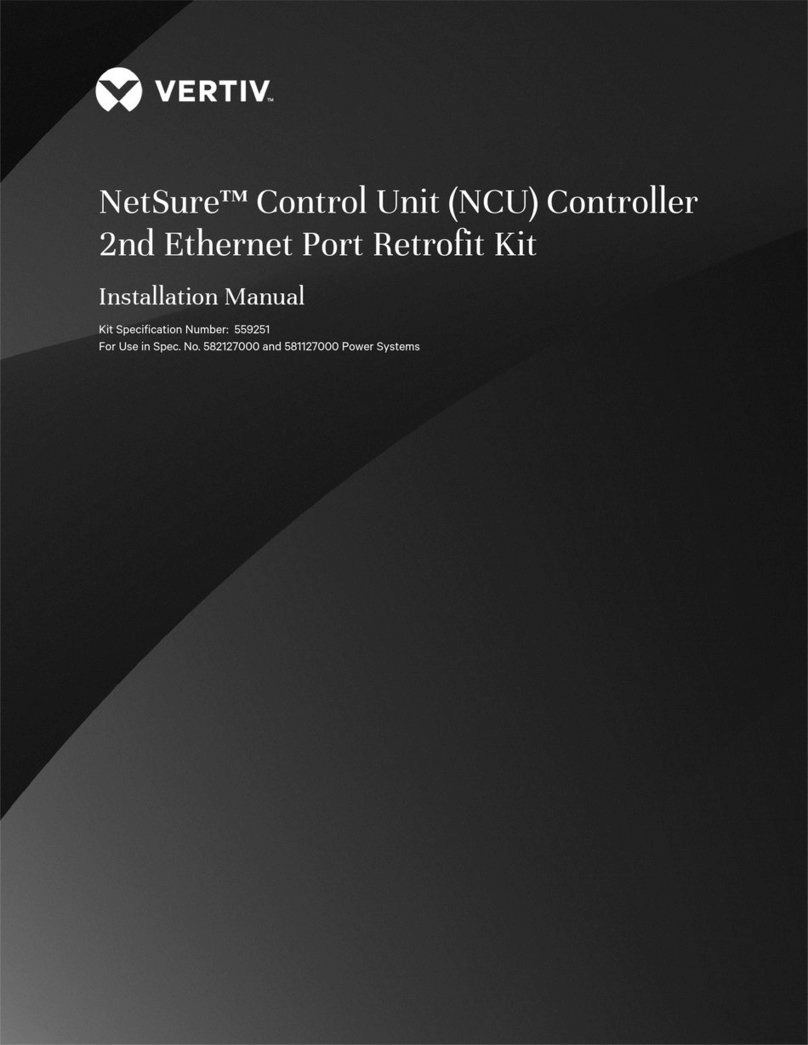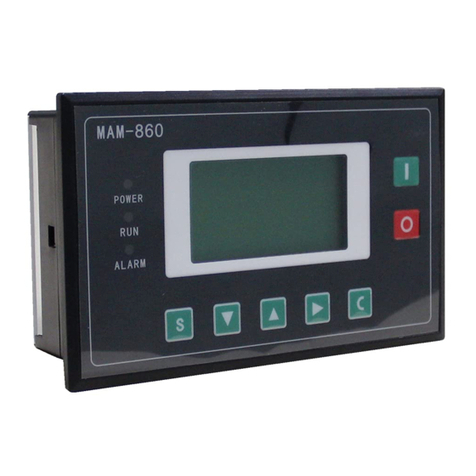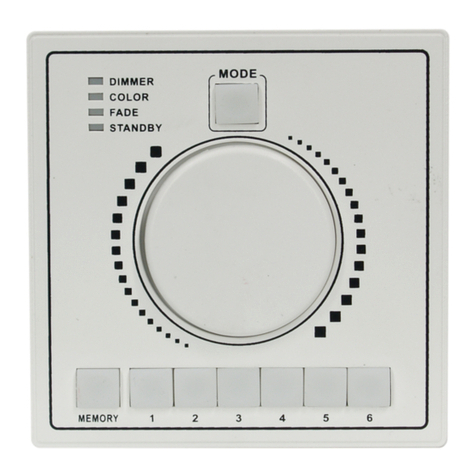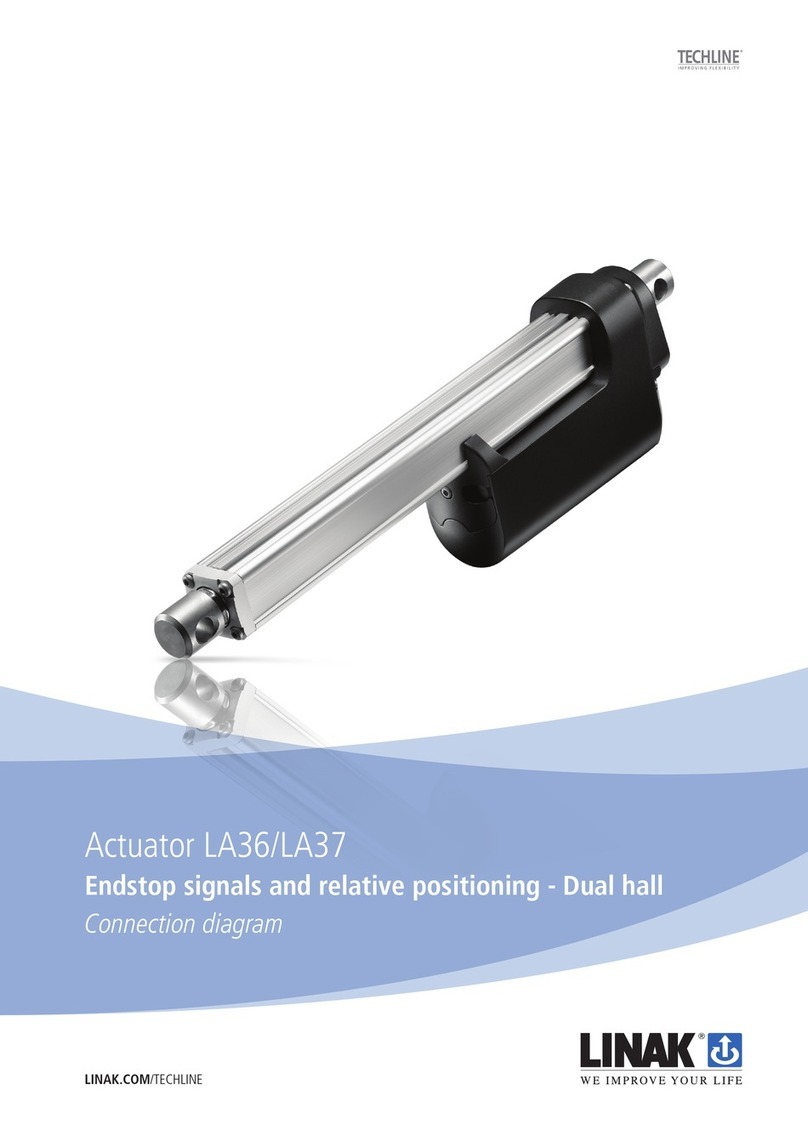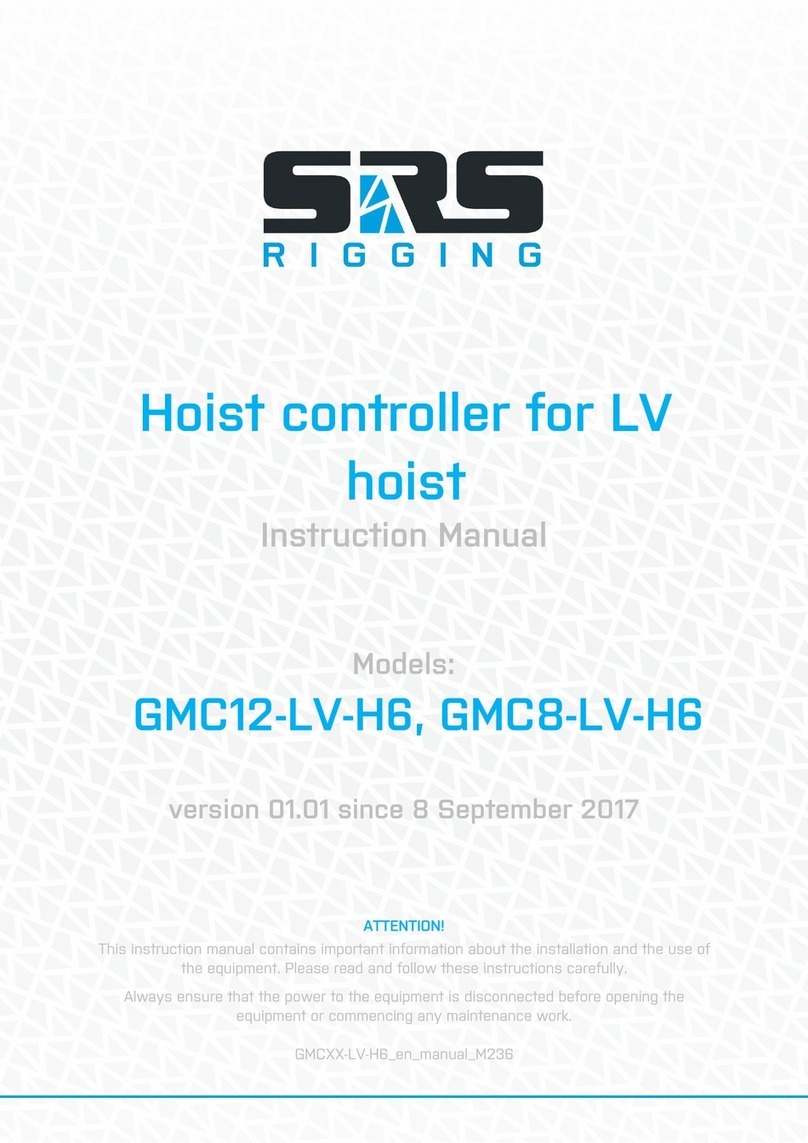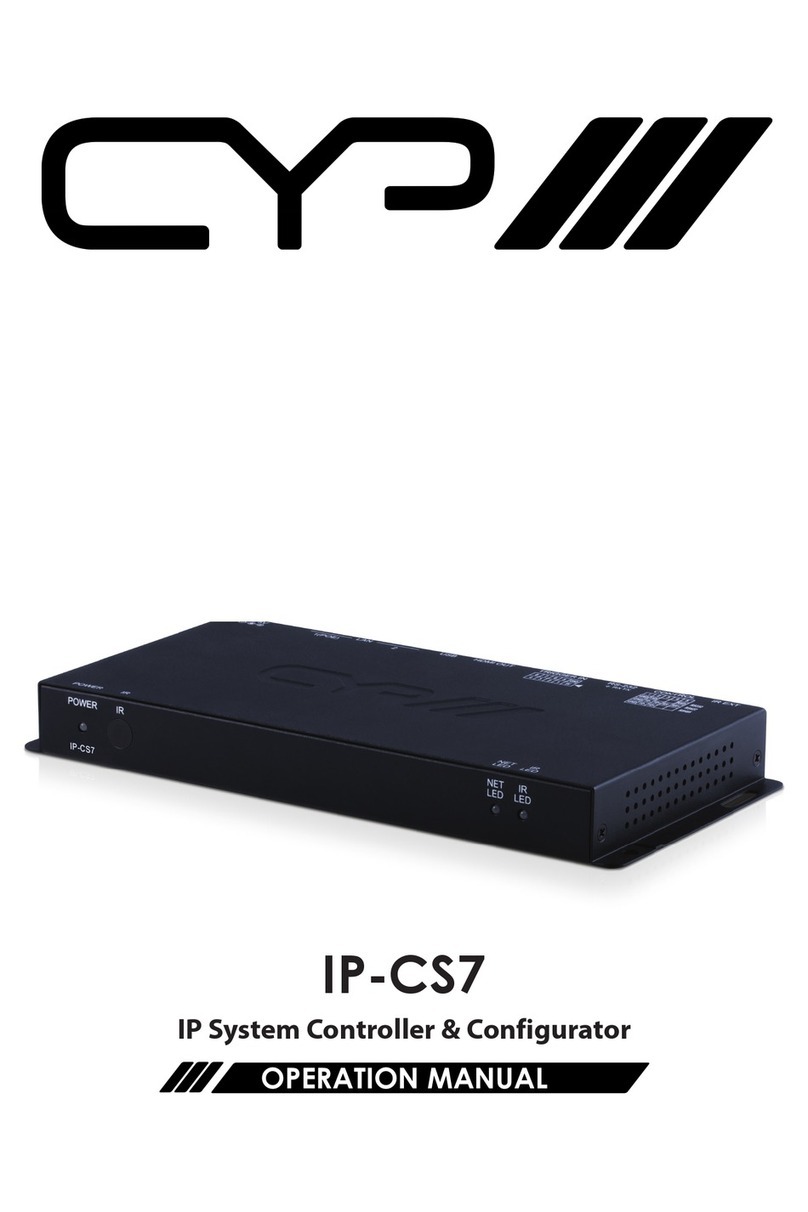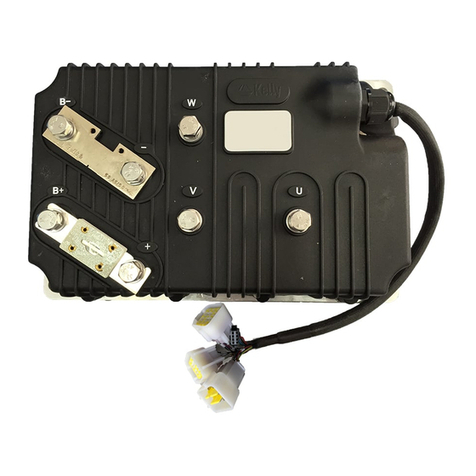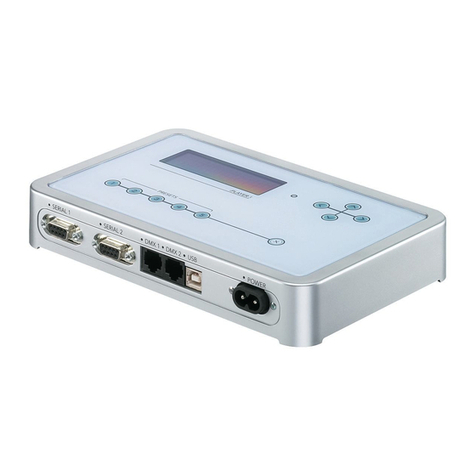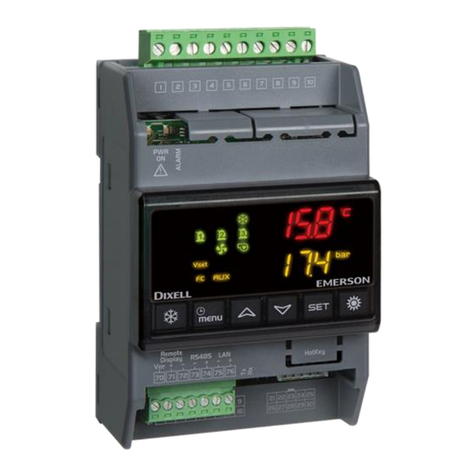Apeks Egress User manual

EGRESS
SECOND STAGE
REGULATOR
TECHNICAL SUPPORT
APEKS MARINE EQUIPMENT LTD, NEPTUNE WAY, BLACKBURN, LANCASHIRE. BB1 2BT
MAINTENANCE MANUAL
FOR
AUTHORISED TECHNICIANS
Document No. AP5832
Issue 5
16/02/2011

2
Egress Maintenance Manual
3
Egress Maintenance Manual
Change
No.
Change
Request No.
Description & Comments: Change Date New Issue No. Changed
By:
Approved
By:
1116 0247 Add details of new O ring pick and reduce the
torque setting of the spindle from 5 Nm to 3
Nm.
16/02/11 06 RH ACD
AMENDMENTS RECORD:
Amendments and approval of this document can only be carried out by the relevant people listed on the Approved list of signatures, which
is listed in the Apeks Quality Manual. To instigate a change, a Task / Change request form, (Form No. ‘DESI/10002’), must be completed
and passed to the relevant person(s) for approval which are listed on the Approved List of Signatures. When approval has been granted and
recoreded this table can then be completed and the document up issued.

2
Egress Maintenance Manual
3
Egress Maintenance Manual
Contents
COPYRIGHT NOTICE................................................................................................................................................................ 3
INTRODUCTION ........................................................................................................................................................................ 3
WARNINGS, CAUTIONS & NOTES ......................................................................................................................................... 3
SCHEDULED SERVICE ............................................................................................................................................................. 3
GENERAL GUIDELINES ........................................................................................................................................................... 3
GENERAL CONVENTIONS....................................................................................................................................................... 4
DISASSEMBLY PROCEDURES ................................................................................................................................................ 4
REASSEMBLY PROCEDURES.................................................................................................................................................. 7
FINAL TESTING ....................................................................................................................................................................... 10
TABLE 1 - TROUBLSHOOTING GUIDE.................................................................................................................................11
TABLE 2 - RECOMMENDED TOOL LIST.............................................................................................................................. 12
TABLE 3 - RECOMMENDED LUBRICANTS AND CLEANERS ........................................................................................ 13
CLEANING AND LUBRICATION PROCEDURE .................................................................................................................. 14
TABLE 4 -TORQUE SPECIFICATIONS .................................................................................................................................. 15
TABLE 5 - TEST BENCH SPECIFICATIONS ......................................................................................................................... 15
EXPLODED PARTS DRAWING............................................................................................................................................... 16

4
Egress Maintenance Manual
5
Egress Maintenance Manual
An Ofcial Inspection consists of:
1. A pressurised immersion test of the entire unit to
check for air leakage.
2. Checking for stable medium pressure that is within
the acceptable range.
3. Checking for opening effort that is within the
acceptable range.
4. Checking for smooth operation of the control knob
and venturi switch (if tted.)
5. A visual inspection of any lters for debris or
discoloration.
6. A visual inspection of the exhaust valve(s) to see
that they are in good condition and that it is seating
against a clean and undamaged surface.
7. A visual inspection of the mouthpiece looking for
tears or holes and checking the general condition.
8. Pulling back hose protectors and checking that the
hoses are secure in the hose crimps.
If a regulator fails steps 1,2,3 or 4 the entire regulator
should be serviced. If a regulator fails 5,6 or 7 it will be up
to the technician’s discretion whether or not a full service
is required. Failure of step 8 requires replacement of the
hose.
GENERAL GUIDELINES
1. In order to correctly perform the procedures outlined
in this manual, it is important to follow each step
exactly in the order given. Read over the entire
manual to become familiar with all procedures and
to learn which specialty tools and replacement parts
will be required before commencing disassembly.
Keep the manual open beside you for reference while
performing each procedure. Do not rely on memory.
2. All service and repair should be carried out in a work
area specically set up and equipped for the task.
Adequate lighting, cleanliness, and easy access to
all required tools are essential for an efcient repair
facility.
3. During disassembly, reusable components should
be segregated and not allowed to intermix with
nonreusable parts or parts from other units. Delicate
parts, including inlet ttings and valve seats which
contain critical sealing surfaces, must be protected
and isolated from other parts to prevent damage
during the cleaning procedure.
4. Use only genuine Apeks parts provided in the 2nd
stage service kit (AP0219). DO NOT attempt to
substitute an Apeks part with another manufacturer’s,
regardless of any similarity in shape or size.
5. Do not attempt to reuse mandatory replacement
parts under any circumstances, regardless of the
amount of use the product has received since it was
manufactured or last serviced.
6. When reassembling, it is important to follow every
torque specication prescribed in this manual,
using a calibrated torque wrench. Most parts are
made of either marine brass or plastic, and can be
permanently damaged by undue stress.
COPYRIGHT NOTICE
This manual is copyrighted, all rights reserved. It may not,
in whole or in part, be copied, photocopied, reproduced,
translated, or reduced to any electronic medium or machine
readable form without prior consent in writing from Apeks
Marine Equipment Ltd. It may not be distributed through the
internet or computer bulletin board systems without prior
consent in from Apeks Marine Equipment Ltd.
©2004 Apeks Marine Equipment Ltd.
Egress Maintenance Manual
(AP5832 Issue 1)
INTRODUCTION
This manual provides factory prescribed procedures for
the correct maintenance and repair of the Apeks Egress. It
is not intended to be used as an instructional manual for
untrained personnel. The procedures outlined within this
manual are to be performed only by personnel who have
received factory authorized training through an Apeks Service
& Repair Seminar. If you do not completely understand all
of the procedures outlined in this manual, contact Apeks to
speak directly with a Technical Advisor before proceeding any
further.
WARNINGS, CAUTIONS & NOTES
Pay special attention to information provided in warnings,
cautions, and notes that are accompanied by one of these
symbols:
WARNIN G S indicate a procedure or situation
that may result in serious injury or death if
instructions are not followed correctly.
CAUTIONS indicate any situation or technique
that will result in potential damage to the
product, or render the product unsafe if
instructions are not followed correctly.
NOTES are used to emphasise important points, tips,
and reminders.
SCHEDULED SERVICE
It is recommended that the Apeks Egress second stage
regulator should be serviced annually regardless of usage.
However, If at all unsure about the correct functioning of the
Apeks Egress, then it must be ofcially inspected immediately.
All service and inspection details need to be documented
in the Regulator Service Record in the back of the Owner’s
Manual to keep the Limited Lifetime Warranty in effect.

4
Egress Maintenance Manual
5
Egress Maintenance Manual
GENERAL CONVENTIONS
Unless otherwise instructed, the following terminology and
techniques are assumed:
1. When instructed to remove, unscrew, or loosen a
threaded part, turn the part anti-clockwise.
2. When instructed to install, screw in, or tighten a
threaded part, turn the part clockwise.
3. When instructed to remove an ‘O’ Ring, use the pinch
method (see gure below) if possible, or use a brass,
aluminium or plastic ‘O’ Ring removal tool. Avoid using
hardened steel picks, as they may damage ‘O’ Ring
sealing surfaces. All ‘O’ Rings that are removed are
discarded and replaced with brand new ‘O’ Rings.
1. Whilst holding the Inlet Fitting (12) stationary with a
19mm spanner turn the hose swivel anti-clockwise
using an 11/16” spanner. Taking care not to scratch the
‘O’ Ring grooves, remove the ‘O’ Rings from both the
inside of the hose swivel and from the male end of the
hose.
4. The following acronyms are used throughout
the manual: MP is Medium Pressure; HP is High
Pressure; PN is Part Number.
5. Numbers in parentheses reference the key numbers
on the exploded parts schematics. For example, in
the statement, “...remove ‘O’ ring (4) from...”, the
number 4 is the key number to the Spring Carrier ‘O’
Ring.
DISASSEMBLY PROCEDURES
NOTE: Before performing any disassembly, refer
to the exploded parts drawing, which references all
mandatory replacement parts. These parts should
be replaced with new, and must not be reused under
any circumstances - regardless of the age of the
regulator or how much use it has received since it
was last serviced.
CAUTION: Use only a plastic, brass or aluminium
‘O’ Ring removal tool (PN AT79) when removing
‘O’ Rings to prevent damage to the sealing surface.
Even a small scratch across an ‘O’ Ring sealing
surface could result in leakage. Once an ‘O’ Ring
sealing surface has been damaged, the part must be
replaced with new. DO NOT use a dental pick, or
any other steel instrument.
Pinch Method
Press upwards on
sides of ‘O’ Ring to
create a protrusion.
Grab ‘O’ Ring or
insert ‘O’ Ring tool
at protrusion.
2. Pull back the two hose
protectors and inspect
the hose crimps.
If either crimp is
damaged or the hose
is pulling out of the
crimp then the hose
must be replaced.
3. Using the Egress Locking Ring Tool (AT62) unscrew the
front locking ring (19) and remove the front cover (18).
NOTE: Ensure that tool is aligned with both locking
ring and front cover before unscrewing.
Removal of hose
Removal of diaphragm

6
Egress Maintenance Manual
7
Egress Maintenance Manual
4. Using the reverse side
of the Egress Locking
Ring Tool (AT62),
fully unscrew the inner
locking ring (17).
5. Carefully lift out
Friction Ring (16) and
Diaphragm (15).
6. Using a 19mm ring
spanner, unscrew the
Inlet Fitting (12).
7. Using a 5mm Allen Key and by screwing clockwise
remove the Valve Seat (9) from the Inlet Fitting (12).
8. Remove the ‘O’ Rings
(10 & 11) from the
both the Valve Seat
and the Inlet Fitting.
9. Withdraw and lift the
Spindle Assembly (2-8)
out of the Case (1).
11. Whilst the Shuttle Valve (6) is held compressed into the
Spindle Body (2), remove the Lever (8) by sliding out the
lever feet one at a time.
12. Carefully remove the Shuttle Valve Assembly (3-7) from
the Spindle Body (2) and separate the Spring Carrier (3), the
Valve Spring (5) and the Shuttle Valve (6).
Removal of valve assembly
10. Whilst pressing down the lever (7) screw the 9/16” UNEF
Handle Tool (AT48) into the Spindle Body (2), just enough
to drop the lever.
NOTE:The tool should
not be screwed in too
tightly, as this could
damage the rubber seat
(7) on the shuttle valve.
This is only to relieve
the spring tension on
the leaver for removal.

6
Egress Maintenance Manual
7
Egress Maintenance Manual
14. To remove the Exhaust Gate (14) insert a 3mm
screwdriver into the holes on the bottom of the Exhaust
Gate and carefully push out the tabs in turn. Then simply
lift the top edge of the Exhaust Gate out the Case.
15. In turn, fold back the edges of each of the Exhaust Valves
(13) and inspect underneath. The seating surfaces should
be clean and free of damage. Inspect the Exhaust Valves.
They should be supple and have well dened edges. If
they look undamaged then there is no need to remove
them and they may be reused. If there is any sign of
deterioration they must be replaced.
16. Using side cutters, snip the Zip Tie (22). Remove and
inspect Mouthpiece (21).
This Ends Disassembly
Before starting reassembly, perform parts cleaning
and lubrication according to the procedures
outlined in ‘Cleaning & Lubrication’ on page 14.
NOTE: If Exhaust Valves (13) are to be removed,
pinch edge of Exhaust Valve and pull tail through hole
in Case (1)
13. Remove the ‘O’ Ring (4) from the Spring Carrier (3) and,
using a ngernail, remove the Rubber Seating (7) from
the end of the Shuttle Valve (6).
Inspection and Removal of Exhaust Valves Removal of mouthpiece
CAUTION: Whilst pushing out tabs, hold a
nger close to the head of the screwdriver
to prevent damaging the Case.
NOTE: It is not always necessary to remove the
Exhaust Gate and the Exhaust Valves. A visual
inspection of the Valves can be made from inside the
case. If the regulator has been leaking or the Exhaust
Gate is damaged then the components should be
removed.

8
Egress Maintenance Manual
9
Egress Maintenance Manual
REASSEMBLY PROCEDURES
1. If the Exhaust Valves (13) were removed, replace by
threading the tails through the retaining holes on the
outside of the Case (1) until the barb engages on the
inside. If valves are new, cut off the excess stem with
side cutters leaving approximately 5mm of the tail
behind.
2. Orientate the Exhaust Gate (14) with the straight
edge to the open side (top) of the Case (1). (Note that
the Exhaust Gate is not symmetrical). Insert the two
tabs into the bottom side of the case rst, then, whilst
squeezing in the sides, clip in the top two tabs.
3. Install a new,
lubricated ‘O’ Ring
(4) onto the Spring
Carrier (3).
5. Fit the Valve Spring (5) over the Spring Carrier (3).
Carefully guide the stem of the Shuttle Valve (6) over
the Spring Carrier (3).
Fitting exhaust valves and exhaust gate
Assembling and tting valve assembly
WARNING: Flooding may occur if the tails of
the valves have not been fully pulled through.
Check that barb has engaged on inside of
case.
CAUTION: Care should be taken. Damage
can occur to the exhaust gate if it is not t
correctly.
NOTE: Check sides have clipped in properly. If they
have not then gate must be removed (according to
Disassembly Procedure 13) then re-installed
CAUTION: Damage to ‘O’ ring can occur
if placed inside the shuttle valve and not
installed onto the spring carrier rst as shown
above.
6. Carefully insert the above Shuttle Valve assembly into the
Spindle Body (2). Leave out the Rubber Seating (7) at this
stage.
7. Screw in the Handle tool (AT48).

8
Egress Maintenance Manual
9
Egress Maintenance Manual
NOTE: If tted correctly the lever should rise when the tool is
removed
9. Install new lubricated ‘O’ Rings (10 & 11) onto the Valve Seat (9)
and the Inlet Fitting (12).
10. Install the Valve Seat (9) into the Inlet Fitting (12), screwing
anti-clockwise with a 5mm Allen Key until it stops.
CAUTION: Ensure that lever is not twisted
and that legs are parallel. Lever should
appear as that shown on the left, not as
shown on the right. If necessary, gently
squeeze legs together to straighten.
NOTE: Lever should face away from spindle
opening as shown below.
CAUTION: Do not tighten
NOTE: Ensure that the Lever has a full range of
movement and does not catch on either the Spindle
Body or the Case.
8. Install Spindle Assembly (2-8) into Case (1).
7. Whilst Shuttle Valve (6) is held in place by the tool, insert
Lever (8) by sliding feet into holes one at a time.
7. Lastly insert the new rubber seat and press it rmly in
place.

10
Egress Maintenance Manual
11
Egress Maintenance Manual
11. Whilst holding the Spindle Assembly (2-8) in place, screw the
Inlet Fitting (12) into the Case using a torque wrench with a
19mm adapter or socket. Tighten to 3 Nm.
12. By turning clockwise, screw in the Valve Seat (9) until the
Lever (8) drops.
NOTE: Top of Lever should be 2mm below the top
of the Case, although the correct lever height can be
checked in step 15
13. Position the Diaphragm (15) in the Case (1), followed by the
Friction Ring (16) . Work edges of Friction Ring into place with
nger so that the Diaphragm sits evenly in the Case.
14. Screw in the Inner Locking Ring (17) using Egress
Locking Ring Tool (AT62) and tighten.
CAUTION: Ensure Diaphragm is seated
correctly and not creased. Creasing may
be caused by excessive tightening. Carry
out suction test by holding thumb over Inlet
Fitting (12) to seal and trying to breathe
through mouthpiece outlet port. No air
should be drawn in.
16. Install Front Cover (18) and screw in Front Locking Ring
(19). Tighten using other side of Egress Locking Ring Tool
(AT62.)
NOTE: Ensure that the ribs on the Front Locking
Ring are aligned correctly with those on the Front
Cover when tightening using locking ring tool.
Fitting Diaphragm
15. At this stage, it is important to check the correct lever
height setting. To do this, connect the Egress second
stage to a medium pressure air supply of 9.5 (±0.5)
bar and pressurise the regulator.
Correct Lever Height Check
CAUTION: Any adjustment should only take
place when regulator is un-pressurised.
15a. With the regulator
pressurised, locate and
press the Egress Locking
Ring Tool (AT62) onto the
top of the Case as shown
right. There should be a
highly audible ow of air
through the mouthpiece
outlet port. If there is no
air ow, the lever is set too
low.
15b. With the same tool
used the opposite
way round, and
located into the Inner
Locking Ring as if
tightening in step 14,
there should not be
an audible ow of air.
If there is an audible
ow of air, the lever is
set too high.

10
Egress Maintenance Manual
11
Egress Maintenance Manual
FINAL TESTING
Second Stage Opening Effort Test
1. Connect the rst stage regulator to a calibrated test
bench and pressurise the system to 200 (±10) bar.
Slowly open the owmeter control knob (start vacuum)
while watching both the magnahelic gauge and the
intermediate pressure gauge.
2. When the intermediate pressure begins to drop,
indicating the second-stage valve is open, the
magnahelic gauge should indicate an opening
effort of +1.5” to +2.2” . If the reading exceeds these
specications, refer to “Table 1 - Troubleshooting” for
corrective actions.
External Leak Test
1. After disconnecting the regulator from the ow bench,
connect it to a scuba cylinder lled to approximately
200 bar. Open the cylinder valve to repressurise the
regulator, and submerge the entire system in a test tank
of clean water.
2. Observe any bubbles arising from the submerged
regulator over a one minute period. The recommended
time is necessary due to slower bubble formation
that occurs in smaller leaks. Bubbles indicate a leak,
which requires the system to be disassembled at the
source to check sealing surfaces, assembly sequence
and component positioning in order to correct the
problem(s).
NOTE: Extremely small leaks may be better detected
by applying a soap solution or Snoop™ to the leak
area. Bubble streams will indicate the source of the
leak. Before disassembling to correct any leaks,
rinse the entire regulator thoroughly with fresh water
and blow out all residual moisture with ltered, low-
pressure air. Disassemble and remedy the problem,
referring to “Table 1 - Troubleshooting.”
Subjective Breathing Test
1. Depress the Front Cover fully to ensure that an
adequate volume of air needed to clear the second
stage ows through the mouthpiece. Then, inhale
slowly but deeply from the mouthpiece. A properly
serviced and adjusted regulator should deliver air upon
deep inhalation without excessive inhalation effort,
freeow, or “uttering” of the second-stage diaphragm.
When exhaling, there should be no uttering or sticking
of the exhalation valve. If any of these problems occur,
refer to “Table 1 - Troubleshooting”.
This Ends Reassembly
19. Fit the Mouthpiece (21) over the boss on the Case (1). At
the base of the Mouthpiece is a groove for the Zip Tie (22).
Wrap the Zip Tie around the Mouthpiece so that the buckle
points towards the exhaust. Tighten the Zip Tie and snip
the excess strap with side cutters.
18. Screw the hose onto the Egress. Using
a torque wrench with an 11/16” adapter,
tighten the hose to 5 Nm.
17. Install new, lubricated ‘O’ Rings to the medium pressure
hose; ‘O’ Ring AP1154 to the swivel end and AP1409 to
the male end.
Fitting hose and mouthpiece
WARNING: Ensure that the Mouthpiece is
properly secured on the boss.

12
Egress Maintenance Manual
13
Egress Maintenance Manual
Table 1 - Troubleshooting Guide
SYMPTOM POSSIBLE CAUSE TREATMENT
Leakage or freeow from Egress
1. Excessively high rst-stage
intermediate pressure.
1. Refer to rst-stage
Troubleshooting Guide.
2. Rubber Seating (7) damaged or
worn. 2. Replace Rubber Seating.
3. Valve Seat (9) adjusted incorrectly,
Lever (8) set too high.
3. Reset Valve Seat preliminary
settings, and repeat Adjustment
Procedures.
4. Lever (8) bent. 4. Replace Lever.
5. Valve Seat (9) sealing surface
damaged. 5. Replace Valve Seat.
6. Valve Spring (5) damaged. 6. Replace Spring.
7. Spring Carrier ‘O’ Ring (4) damaged. 7. Replace ‘O’ Ring.
8. Shuttle Valve (6) bore damaged. 8. Replace Shuttle Valve.
Low purge or excessive work of
breathing (full cylinder)
1. Low rst-stage intermediate
pressure.
1. Refer to rst-stage
Troubleshooting Guide.
2. Valve Seat (9) adjusted incorrectly,
Lever (8) set too low.
2. Reset Valve Seat to preliminary
setting and repeat Assembly
Procedure 12.
3. Intermediate pressure hose clogged
or obstructed. 3. Clean or replace Hose.
4. Lever (8) bent or catching on Spindle
Body (2). 4. Replace Lever.
Water entering Egress
1. Mouthpiece (21) damaged or incor-
rectly tted.
1. Replace or re-t Mouthpiece as
appropriate.
2. Diaphragm (15) damaged. 2. Replace Diaphragm.
3. Diaphragm (15) improperly seated in
Case (1).
3. Remove Front Cover (18) and
Inner Locking Ring (17) prop-
erly reassemble Friction Ring
(16) with Diaphragm (check for
distortion).
4. Exhaust Valve(s) (13) damaged. 4. Replace Exhaust Valve(s).
5. Case (1) damaged. (Check exhaust
valve seating surface.) 5. Disassemble and replace Case.
6. Inlet Fitting ‘O’ Ring (11) damaged. 6. Replace ‘O’ Ring.

12
Egress Maintenance Manual
13
Egress Maintenance Manual
Table 2 - Recommended Tool List
PART NO. DESCRIPTION APPLICATION
AP0430 I.P. test gauge Intermediate pressure testing
AT79 ‘O’ Ring removal pick ‘O’ Ring removal
AT62 Egress Locking Ring Tool Front Cover, Inner Locking Ring removal and installation
n/a Torque wrench, Nm or lbf/ft Inlet Fitting, Hose
n/a 11/16” adapter for torque wrench Hose
AT34 11/16” spanner Hose
AT37 5mm Allen key Valve Seat
AT33 19mm spanner Inlet Fitting
n/a 19mm adapter for torque wrench Inlet Fitting
n/a Side cutters Zip Tie, Exhaust Valves
n/a 3mm Screwdriver Exhaust Gate removal

14
Egress Maintenance Manual
15
Egress Maintenance Manual
Table 3 - Recommended Lubricants & Cleaners
LUBRICANT / CLEANER APPLICATION SOURCE
Christo-Lube® MCG-111
(Lubricant)
All ‘O’ Ring seals Apeks Marine Equipment Ltd
PN AP1495, or
Lubrication Technologies
310 Morton Street
Jackson, OH 45640, USA
(800) 477-8704
Biox
(Cleaning agent)
Biological immersion uid for reus-
able stainless steel and brass parts.
Solent Divers Ltd
122-128 Lake Rd, Portsmouth,
Hants, PO1 4HH
White distilled vinegar (100 gr.)
(Cleaning agent)
Acid bath for reusable stainless
steel and brass parts.
“Household” grade
Liquid dishwashing detergent diluted
with warm water
(Cleaning agent)
Degreaser for brass and stainless
steel parts; general cleaning solu-
tion for plastic and rubber
“Household” grade
CAUTION: Silicone rubber requires no lubrication or preservative treatment. DO NOT
apply grease or spray to silicone rubber parts (eg. Diaphragm, Exhaust Valves.) Doing so
may cause a chemical breakdown and premature deterioration of the material.
CAUTION: Do not use muriatic acid for the cleaning of any parts. Even if strongly diluted,
muriatic acid can harm chrome plating and may leave a residue that is harmful to ‘O’ Ring
seals and other parts

14
Egress Maintenance Manual
15
Egress Maintenance Manual
Cleaning & Lubrication Procedure
General Cleaning of all Parts
1. Place all components in an ultrasonic cleaning bath containing an appropriate cleaning solution, such as Biox.
2. The components should be cleaned for 6 minutes, depending upon their condition. Longer cleaning times may used if
required.
3. Rinse the components in warm fresh water.
4. The components should then be blown dry or left to dry naturally
Lubrication and Dressing
All ‘O’ Rings should be lubricated with Christo-Lube® MCG-111. Dress the ‘O’ Rings with a very light lm of grease, and remove any visible
excess by running the ‘O’ Ring between thumb and forenger. Avoid applying excessive amounts of Christo-Lube grease, as this will attract
particulate matter that may cause damage to the ‘O’ Ring.
Enriched Air Nitrox Use – Outside EEC (European Economic Community) Countries Your Apeks regulator has been prepared for use with Enriched
Air Nitrox (EAN) where the percentage of oxygen in the EAN does not exceed 40%. This is possible because each regulator is built to a high standard of
cleanliness using EAN compatible components and lubricants. In addition, each regulator design has passed stringent adiabatic compression testing to
ensure its safety and compatibility with increased percentages of oxygen. If it is your intention to use your new Apeks regulator with Nitrox EAN (O2 not to
exceed 40%), it is imperative that you maintain the internal cleanliness of the regulator (see section on Care and Maintenance). If it is your intention to use
the regulator interchangeably with breathing air, the breathing air should be oxygen-compatible or “hyperltered” where the condensed hydrocarbons do not
exceed 0.1 mg/m3. Your local authorised Apeks dealer can help you determine whether the breathing air that they provide meets this criterion.
Standard compressed breathing air meeting the EN 12021 standard, often referred to as Grade E in the United States, does not necessarily meet this
criterion. Grade E or EN 12021 breathing air may contain a certain level of hydrocarbons, including traces of compressor oils that while not considered
harmful to breathe, can pose a risk in the presence of elevated oxygen content. Passing hydrocarbons through a valve and regulator creates a cumulative
effect where the hydrocarbons build up over time along the internal passageways of the equipment. When these hydrocarbons come into contact with high-
pressure oxygen enriched air, they can pose a very real hazard that can lead to combustion. Therefore, if a regulator has had use with Grade E or EN 12021
breathing air, it should be returned to an authorised Apeks dealer for overhaul service including oxygen cleaning, prior to being put back into nitrox service.
Although second stage components are not exposed to high pressure EAN, Apeks recommends that the same cleaning procedures be followed for the
complete regulator. This prevents the possibility of cross contamination and guarantees the cleanliness of the entire regulator.
Enriched Air Nitrox Use – Inside EEC (European Economic Community ) countries EN 1443-3 and EN13949In CEE countries, diving with Nitrox/O2
is controlled by Standards EN 144-3 – Respiratory protective devices - Gas cylinder valves - Part 3: Outlet connections for diving gases Nitrox and oxygen
- and EN 13949 – Respiratory equipment - Open circuit self-contained diving apparatus for use with compressed Nitrox and oxygen - requirements, testing,
marking.
NOTE : Apeks offers a range of regulators designed and manufactured specially for use with oxygen-enriched mixtures, over 21% and up to 100% oxygen.
This range has been certied according to the EN 144-3 and EN 13949 standards and meets the requirements of the adiabatic compression tests. They have
received CE certication for this type. For further information on this range, contact your Apeks specialist center.
WARNING : These regulators tted with special connections should be used only with complementary equipment (tank valves, tanks, pressure
gauges, etc.) designed and prepared for use with an oxygen-enriched mixture. These items are marked Nitrox/O2.
WARNING: If the regulator that you use is tted with a yoke or DIN connection, it is designed for use only with compressed breathing air (21%
oxygen and 79% nitrogen) which meets the EN 12021 standard. DO NOT USE this equipment with other mixtures or with gases containing more
than 21% oxygen. Disregarding this rule could result in serious injury or death caused by re or explosion.
Every Nitrox/O2 regulator is assembled in a clean workshop, using compatible components and special lubricants. It is important to maintain the
interior of the regulator in a clean state. Breathing air used in the production of a mixture should be oxygen compatible and double ltered with
a hydrocarbon content not greater than 0.1 mg/m3. Your Apeks technical specialist should be able to help you determine if the breathing air he
supplied meets these criteria.
WARNING: Please check the regulations regarding Nitrox in your particular country as this may differ
from Apeks standard policy.

16
Egress Maintenance Manual
17
Egress Maintenance Manual
Table 5 - Test Bench Specications
TEST CONDITION ACCEPTABLE RANGE
Opening Effort High Pressure > 50 bar gauge
Medium pressure 9.5±0.5 bar +1.5 to +2.2 in. H20
External Leak High Pressure > 50 bar gauge
Medium Pressure 9.5±0.5 bar No Leaks allowed
Table 4 - Torque Specications
PART NUMBER DESCRIPTION / KEY NUMBER TORQUE
AP7561 Inlet Fitting (12) 3 Nm / 2.2 lbf/ft
AP0206 Hose 5 Nm / 3.7 lbf/ft

16
Egress Maintenance Manual
17
Egress Maintenance Manual
Exploded Parts Diagram
1 AP7550 Egress Case 12 AP7561 Egress Inlet Fitting
2 AP7560 Egress Spindle Body 13 AP7552 Egress Exhaust Valves
3 AP7562 Egress Spring Carrier 14 AP7558 Egress Exhaust Gate
4* AP5711 ‘O’ Ring 15 AP7553 Egress Diaphragm
5 AP2021 Valve Spring 16 AP7554 Egress Friction Ring
6 AP5707 Shuttle Valve 17 APF116923 Inner Locking Ring
7* AP2034 Rubber Seating 18 AP7556 Egress Front Cover
8 AP2035 Lever 19 AP7557 Egress Front Locking Ring
9 AP7563 Egress Valve Seat 20 AP7551 Egress Decal
10* AP1154 ‘O’ Ring 21 AP1434 Evoprene Mouthpiece
11* AP1267 ‘O’ Ring 22 AP1677 Zip Tie
* All marked items must be replaced when serviced.

18
Egress Maintenance Manual
Notes

EGRESS SECOND STAGE REGULATOR
AUTHORISED TECHNICIANS
Apeks Marine Equpment Ltd
Neptune Way, Blackburn, Lancs, England, BB1 2BT
MAINTENANCE MANUAL
FOR
TECHNICAL SUPPORT
Table of contents
Other Apeks Controllers manuals
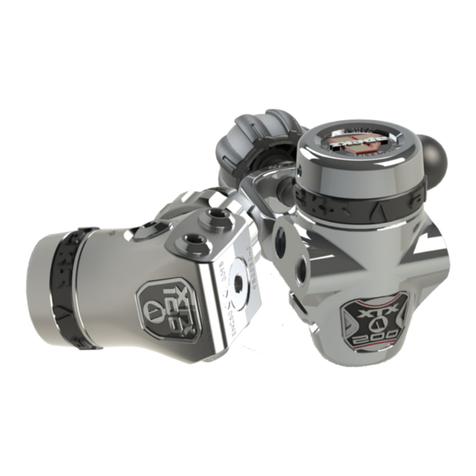
Apeks
Apeks XTX FSR User manual

Apeks
Apeks TEK3/XTX50 User manual
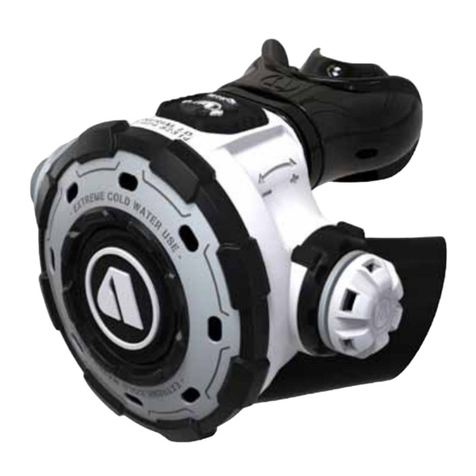
Apeks
Apeks MTX-R User manual
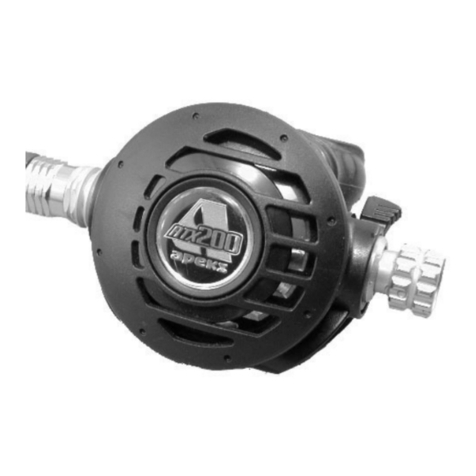
Apeks
Apeks ATX Second Stage User manual
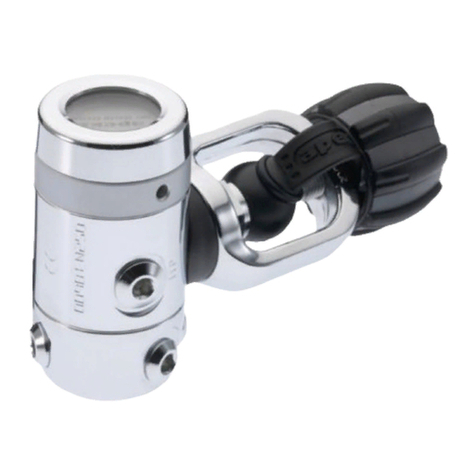
Apeks
Apeks DST User manual
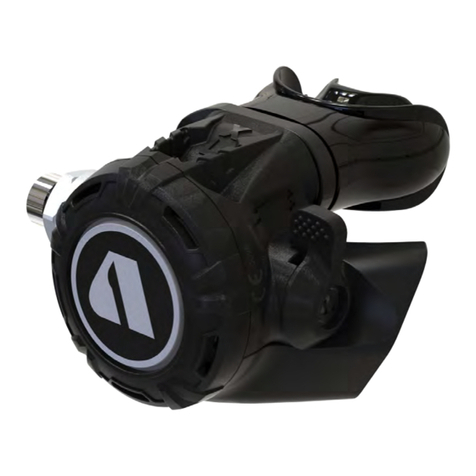
Apeks
Apeks XL4 SECOND STAGE User manual
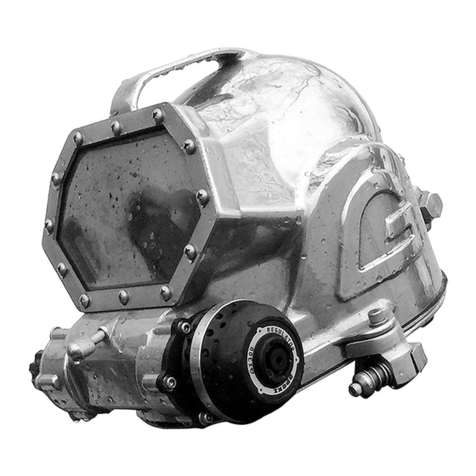
Apeks
Apeks GX300 User manual
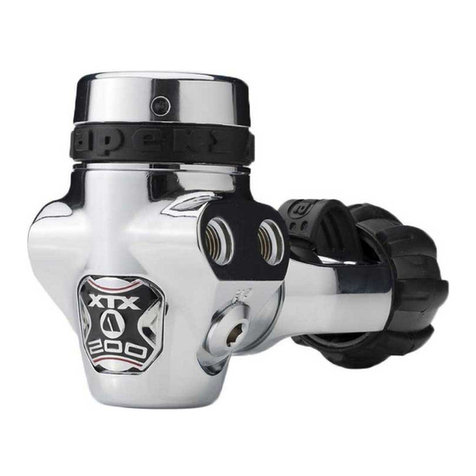
Apeks
Apeks FSR Series User manual
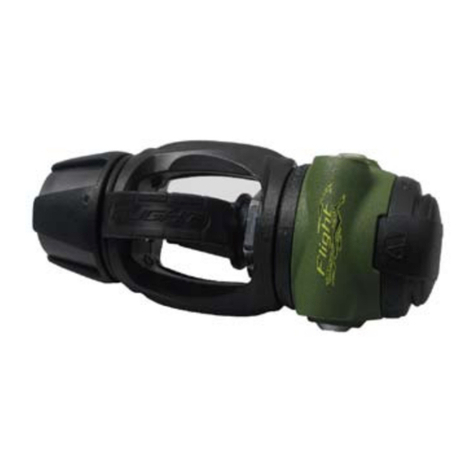
Apeks
Apeks Flight User manual
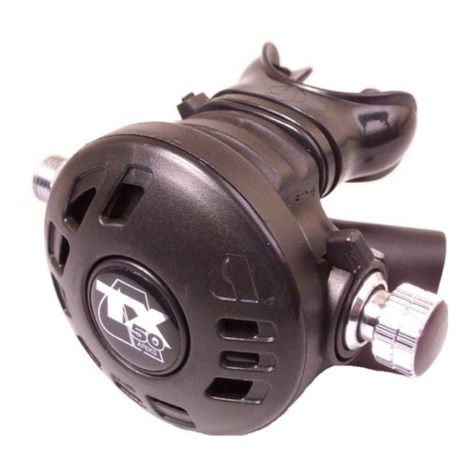
Apeks
Apeks TX100 User manual
Popular Controllers manuals by other brands
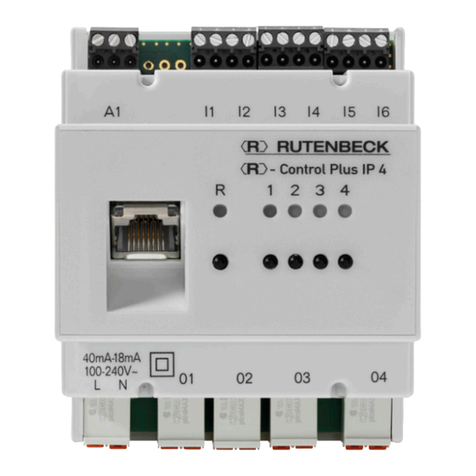
Rutenbeck
Rutenbeck Control Plus IP4 installation instructions
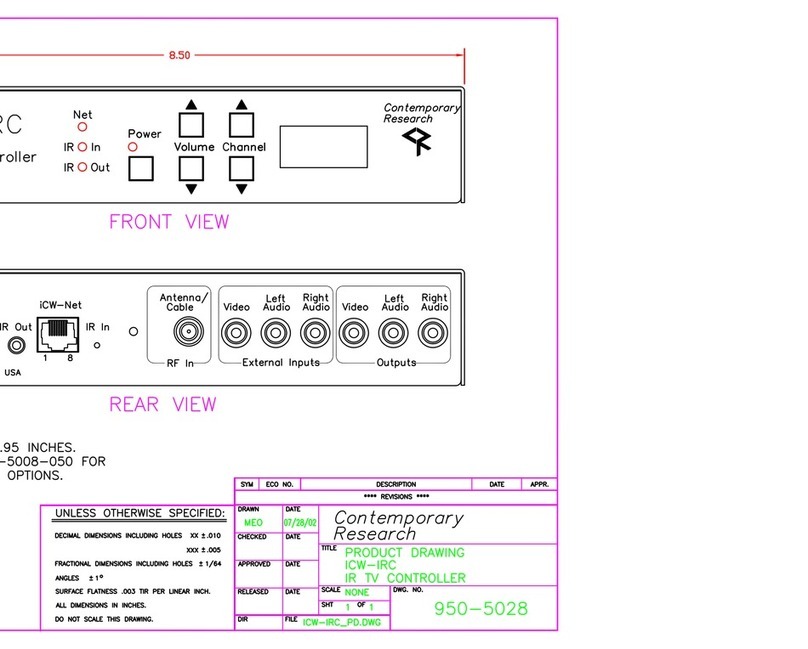
Contemporary Research
Contemporary Research ICW-IRC Dimensions

JMA
JMA PCU-1000 GUI User Guide
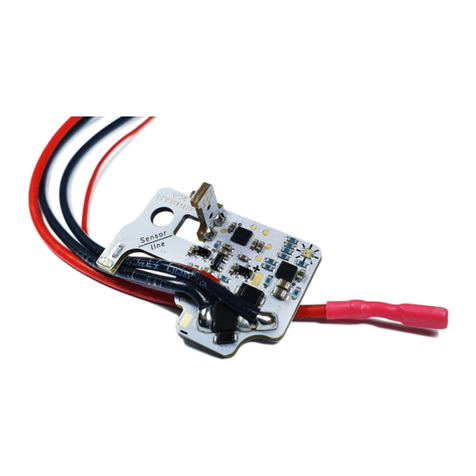
Perun
Perun V2 Hybrid User and installation manual
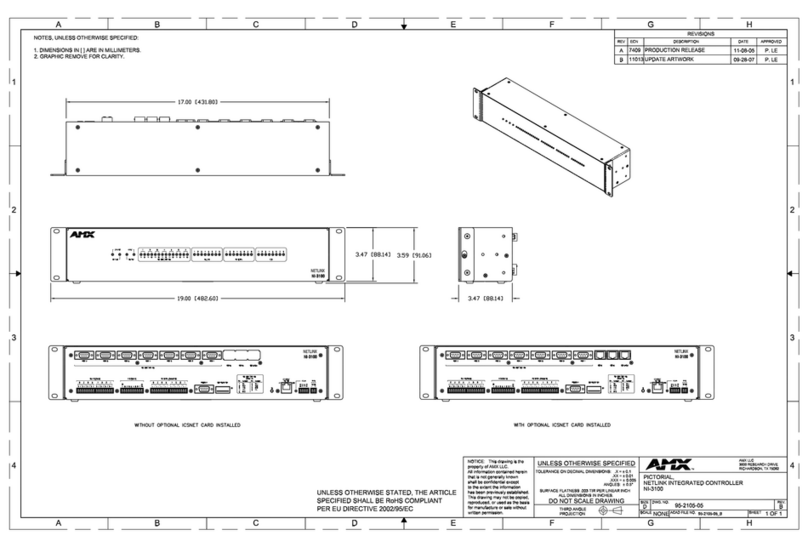
AMX
AMX NetLinx Integrated Controller NI-3100 Dimension Guide

Fiesta
Fiesta BLUE EMBER GRILLS iQue Instruction manual and use
